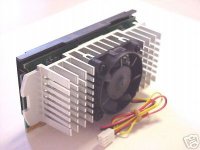Re: Payment made
How did you verify the card?
ian_carney said:At last - I've managed to send payment using Moneybookers. It was very simple once I verified the card.
Tin plated boards are fine
Ian
How did you verify the card?
let's ask to all...how many °C/w heatsink do you use on the chip?
i'm planning to use a pentiumII with 2 fans for every chip...
i'm planning to use a pentiumII with 2 fans for every chip...

moneybookers card verification
Moneybookers charge a small amount of betwen £1 and £2 to the card. You then find out the exact amount from the card company, and then enter this back into Moneybookers using a link that they give to you.
After that you can use the card. Good luck
Ian
Moneybookers charge a small amount of betwen £1 and £2 to the card. You then find out the exact amount from the card company, and then enter this back into Moneybookers using a link that they give to you.
After that you can use the card. Good luck
Ian
Need 2 Lm4780 PCBs
Hello,
Do you have any LM4780 PCBs left? If so I need 2 of them.
Thanks,
routhun
Hello,
Do you have any LM4780 PCBs left? If so I need 2 of them.
Thanks,
routhun
damn!not yet...i'm far from home for 2 weeks...resistor mounted,but no test til now...so...wait!😀
I'm not yet. Damien wrote that he wanted to order more ICs.Has anyone else not received their boards yet?
Tinplated works for me 🙂
I'v not heard anyting for a while now but it is vacation times so.... sailing, drinks and a hot sun.
I'v not heard anyting for a while now but it is vacation times so.... sailing, drinks and a hot sun.
guys, does anyone know what are tose 10pf( or 56pf in the new schematic sent with the boards) across R6 and R8?are useful?why optional?what are used for?if you are here, veteran, please answer!!(or anyone who knows...😀 )
@raikkonen:
are there any other changes than the mentioned 10/56pf
compared to this one?
http://www.audio.webd.pl/pdf/lm4780_sch.pdf
are there any other changes than the mentioned 10/56pf
compared to this one?
http://www.audio.webd.pl/pdf/lm4780_sch.pdf
c2 and c1 are 100uF instead of 47uF...the rest seems to be the same...i don't know the reason because National also raccomands 47uF in his schematic...😕
that 10pF(or 56...) is a low pass, am i wrong?
that 10pF(or 56...) is a low pass, am i wrong?
Many manufacturers of consumer audio equipment are in the far east, like China, Taiwan, etc. They are extremely cost sensitive so National's typical application circuits are usually for this type of market. DIY and higher end guys will know better and use more expensive components to get better sound quality. I have been to China and Hong Kong and it is amazing how they throw things together and if it works OK and sounds OK it is good enough. Been a few years so many things have changed some but quite different.
If you really want the best sound don't use the Ci capacitor (what National calls it) at all. This cap is ONLY for setting DC gain to unity. You will have more DC offset but it is typically still low enough (mV) to be fine. If you want to use the cap then using a larger value gets better bass response but more importantly pushes the distortion this cap creates further away. You can also parallel a small value high quality poly cap for better sound on the high frequencies.
The other caps, 10pF/56pF are probably for noise. I often use a 15 - 47pF cap on the input to signal GND to clean up the input. A cap across the inputs can be used also. Or if they are in the feedback path then they are there to reduce gain at higher frequencies to impove stability. Personally, I have never had stability issues with the LM3886.
-SL
If you really want the best sound don't use the Ci capacitor (what National calls it) at all. This cap is ONLY for setting DC gain to unity. You will have more DC offset but it is typically still low enough (mV) to be fine. If you want to use the cap then using a larger value gets better bass response but more importantly pushes the distortion this cap creates further away. You can also parallel a small value high quality poly cap for better sound on the high frequencies.
The other caps, 10pF/56pF are probably for noise. I often use a 15 - 47pF cap on the input to signal GND to clean up the input. A cap across the inputs can be used also. Or if they are in the feedback path then they are there to reduce gain at higher frequencies to impove stability. Personally, I have never had stability issues with the LM3886.
-SL
yes, as i suspected, they are there to improve stability, and in fact they are optional components...thanx a lot fot the really complete answer!!
Sorry for this delay - last two weeks were very busy for me. All packages are send (last 3) and you will find something extra in them - USB DAC PCB + documentation 😉 I hope that this is OK.
- Home
- Group Buys
- 2x60W/1x120W audio amplifier PCB (LM4780/4732)
